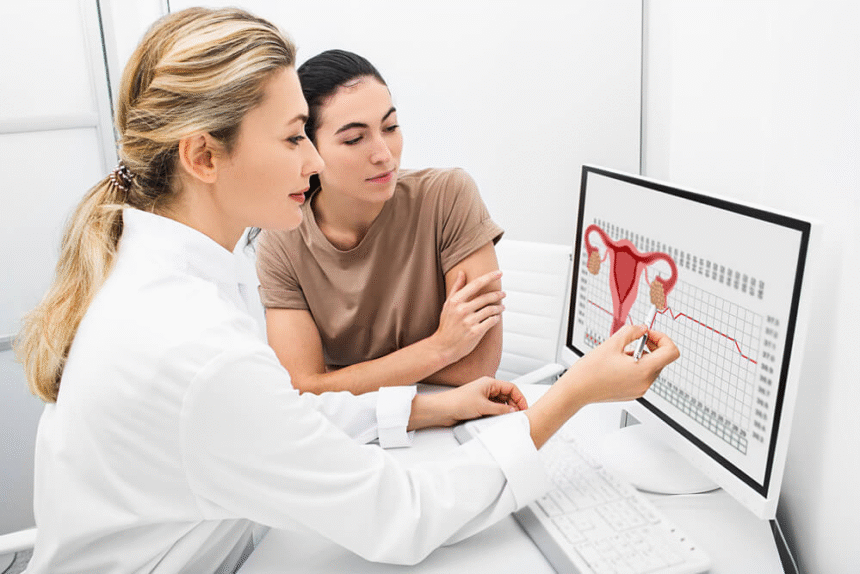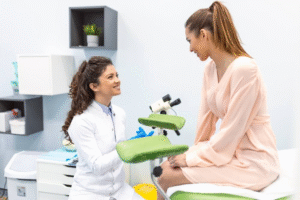Introduction
Gynecological problems affect women at various stages of life and can range from mildly uncomfortable to severely disruptive. These conditions involve the female reproductive system, including the uterus, ovaries, fallopian tubes, cervix, and vagina. Women may face issues like irregular periods, infections, hormonal imbalances, and growths. Knowing the most common gynecological problems is essential to recognize symptoms early, manage health better, and prevent complications. In this article, we’ll explain the most frequent gynecological issues, their symptoms, causes, and typical treatment options.
Menstrual Disorders
One of the most commonly reported gynecological issues is menstrual disorders. These include:
- Amenorrhea – absence of menstruation
- Menorrhagia – heavy or prolonged bleeding
- Dysmenorrhea – painful cramps during menstruation
- Oligomenorrhea – infrequent periods
Causes can include hormonal imbalance, thyroid disorders, polycystic ovary syndrome (PCOS), stress, or lifestyle changes. Treatment depends on the root cause and may involve birth control pills, hormonal therapy, or dietary and lifestyle changes.
Polycystic Ovary Syndrome (PCOS)
PCOS is a chronic endocrine disorder that affects up to 10% of women of reproductive age. It involves the presence of multiple small cysts on the ovaries and is characterized by:
- Irregular or missed periods
- Excess hair growth on the face or body
- Acne and oily skin
- Weight gain or difficulty losing weight
- Difficulty getting pregnant
PCOS increases the risk of diabetes, heart disease, and infertility. Management includes a balanced diet, physical activity, medications to regulate periods, and sometimes fertility treatments.
Vaginal Infections
Many women experience vaginal infections, which can be caused by bacteria, yeast, or parasites. Common types include:
- Yeast infections – caused by Candida
- Bacterial vaginosis – due to overgrowth of bacteria
- Trichomoniasis – a sexually transmitted parasite
Symptoms include itching, burning, unusual discharge, and bad odor. Hygiene, safe sex practices, and proper antibiotic or antifungal treatment are essential for recovery.
Uterine Fibroids
Fibroids are non-cancerous growths in or around the uterus. They can vary in size and number and often appear during the reproductive years. Common symptoms include:
- Heavy menstrual bleeding
- Pelvic pain or pressure
- Frequent urination
- Constipation
- Backache
Some fibroids are asymptomatic and found incidentally, while others may require treatment through medication, uterine artery embolization, or surgery (myomectomy or hysterectomy).
Endometriosis
Endometriosis occurs when tissue similar to the uterine lining grows outside the uterus. This tissue behaves like endometrial tissue during the menstrual cycle, breaking down and bleeding, causing inflammation. Symptoms include:
- Painful menstruation
- Pain during sex
- Chronic pelvic pain
- Infertility
Diagnosis often involves ultrasound or laparoscopy. Treatment options include hormonal therapy, pain relievers, and surgical removal of endometrial tissue.
Pelvic Inflammatory Disease (PID)
PID is an infection of the upper reproductive tract, usually resulting from untreated sexually transmitted infections (STIs). It affects the uterus, fallopian tubes, and ovaries. Signs and symptoms include:
- Lower abdominal pain
- Fever and chills
- Unusual vaginal discharge
- Pain during intercourse or urination
If left untreated, PID can lead to infertility, ectopic pregnancy, and chronic pelvic pain. Treatment involves antibiotics, and hospitalization may be needed in severe cases.
Urinary Tract Infections (UTIs)
Though not always classified under gynecology, UTIs are a frequent issue among women due to the close proximity of the urethra and vagina. Symptoms include:
- Burning sensation during urination
- Frequent urge to urinate
- Cloudy or bloody urine
- Pelvic discomfort
UTIs are treated with antibiotics, and increased fluid intake is recommended. Recurring UTIs may require further evaluation.
Cervical Dysplasia
Cervical dysplasia refers to abnormal cell changes on the cervix surface, often detected through routine Pap smears. The primary cause is the human papillomavirus (HPV). Mild cases may resolve on their own, while severe cases need treatment to prevent progression to cervical cancer. Treatments include cryotherapy, laser therapy, or loop electrosurgical excision procedure (LEEP).
Conclusion
Gynecological issues are common, but early diagnosis and treatment can prevent serious complications. Women should have regular gynecological exams, practice good hygiene, and maintain open communication with healthcare providers. Awareness and proactive care are key to maintaining reproductive health and overall well-being.
















